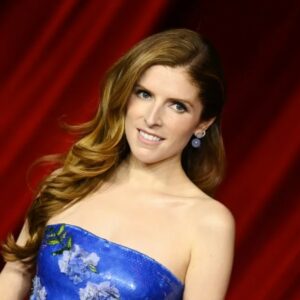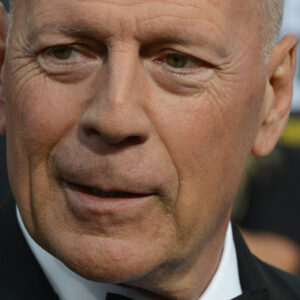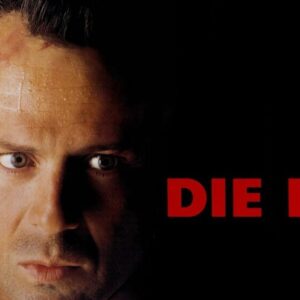Opening Hook:
Ryan Gosling has become synonymous with deeply introspective, character-driven films, often choosing roles that prioritize emotional depth over spectacle. In an industry where big-budget action sequences and visual effects often dominate the box office, Gosling has carved out a distinct niche. His career has shaped the landscape of modern cinema in subtle but impactful ways, challenging both audiences and filmmakers to look beyond the surface and delve into the complexities of human experience.
Thesis Statement:
At the core of Gosling’s work lies a commitment to authenticity and vulnerability. His choice of roles consistently centers on internal struggles and complex character development, promoting a trend toward more introspective, human narratives in contemporary film. His performances have not only redefined what it means to be a leading man but have also pushed the boundaries of how character arcs are portrayed on screen, placing him at the forefront of a quiet revolution in cinema.
1. Commitment to Authenticity and Vulnerability
In an industry that often rewards spectacle over subtlety, Ryan Gosling’s approach to acting has been refreshingly unique. From his early work in indie dramas to his breakout roles in critically acclaimed films, he gravitates toward characters that carry an internalized emotional burden. His portrayal of these characters is grounded in an authenticity that resonates deeply with audiences, allowing viewers to see beyond the screen and into the soul of the character.
Take Drive (2011), for instance. In a film where much of the plot centers on action, Gosling’s performance as the enigmatic Driver is subdued, almost minimalist. He doesn’t rely on grandiose monologues or exaggerated expressions to communicate his character’s inner turmoil. Instead, he lets silence and stillness do the talking. This restraint, coupled with his ability to convey a world of emotion through a single glance, makes his performance unforgettable. Similarly, in Blue Valentine (2010), Gosling immerses himself in the raw, painful reality of a crumbling marriage. His portrayal of Dean, a man grappling with love lost, is both heartbreaking and painfully real, forcing the audience to confront the messy, complicated nature of relationships.
Gosling’s commitment to portraying vulnerability on screen is a testament to his belief in emotional realism. His characters are not flawless heroes; they are deeply flawed individuals, navigating a world that often feels indifferent to their struggles. In La La Land (2016), for example, his character, Sebastian, is not just a jazz musician with big dreams—he’s also a man grappling with the reality of failure, compromise, and the cost of ambition. It’s this focus on the human experience, the highs and lows, that makes Gosling’s performances stand out.
2. Subtlety in Performance: Power in Restraint
One of Gosling’s most defining traits as an actor is his ability to do more with less. His minimalist acting style often eschews long-winded dialogue and grand gestures in favor of subtle, nuanced performances. He is a master of restraint, using silence and stillness as tools to convey depth and emotion. In an age where loud, fast, and explosive often take center stage, Gosling’s quiet, introspective performances are a breath of fresh air.
In Drive, for instance, his character rarely speaks, yet every movement, every facial expression tells a story. Gosling’s ability to communicate through body language is nothing short of remarkable. A simple shift in posture or a flicker of emotion across his face can reveal the inner world of his character in ways that words never could. This focus on non-verbal communication allows the audience to engage with the character on a deeper level, drawing them into the story in a way that feels intimate and personal.
His role in First Man (2018) is another example of this restrained power. Playing Neil Armstrong, a man of few words but profound internal conflict, Gosling channels the emotional weight of the astronaut’s historic journey without ever falling into melodrama. It’s a performance that speaks to the quiet determination and deep personal sacrifice that marked Armstrong’s life, and it’s this subtlety that makes Gosling’s portrayal so compelling.
3. Championing Independent, Auteur-Driven Projects
Beyond his performances, Gosling’s career is notable for his commitment to independent, auteur-driven projects. He has frequently collaborated with visionary directors like Nicolas Winding Refn and Damien Chazelle, filmmakers known for prioritizing character development over spectacle. These collaborations have not only shaped Gosling’s career but have also had a broader impact on the film industry by championing stories that focus on human complexity.
Gosling’s partnership with Nicolas Winding Refn, beginning with Drive, resulted in a film that, despite its action-thriller premise, is fundamentally a character study. The film’s success can largely be attributed to its focus on the internal struggles of its protagonist rather than the external action sequences. This choice to prioritize character over spectacle is a recurring theme in Gosling’s career. Whether it’s the introspective jazz musician in La La Land or the emotionally distant detective in Blade Runner 2049 (2017), Gosling consistently chooses roles that allow for deep exploration of the human psyche.
His collaboration with Damien Chazelle in First Man takes this approach even further. Together, they crafted a film that, while telling the story of one of the most monumental achievements in human history, remains deeply personal and character-driven. By focusing on Neil Armstrong’s personal journey rather than the historical event itself, Gosling and Chazelle created a film that is as much about the emotional cost of greatness as it is about the achievement of it.
4. Gosling’s Influence on Shaping Modern Character-Centric Cinema
Ryan Gosling’s body of work has set a new standard for what character-driven films can achieve. In an era dominated by superhero franchises and high-octane action films, Gosling’s quiet, introspective roles have proven that there is still a place for deeply human stories in mainstream cinema. His success has paved the way for more nuanced, character-centric narratives, inspiring both filmmakers and actors to take risks on projects that prioritize emotional depth over spectacle.
Films like Blade Runner 2049 and The Place Beyond the Pines (2012) are prime examples of how Gosling’s influence has extended beyond his own performances. In Blade Runner 2049, Gosling plays K, a replicant struggling with his own identity and purpose. The film, while visually stunning, is ultimately a meditation on what it means to be human. It’s a narrative that requires the audience to engage with the characters on an emotional level, and Gosling’s restrained yet powerful performance anchors the entire film.
In The Place Beyond the Pines, Gosling’s portrayal of Luke, a motorcycle stunt rider turned bank robber, is another example of his ability to draw audiences into complex, morally ambiguous characters. The film’s exploration of fatherhood, legacy, and the consequences of one’s actions is driven by Gosling’s nuanced performance, once again proving that character-driven stories can be just as engaging, if not more so, than plot-heavy blockbusters.
Conclusion:
Ryan Gosling’s career is marked by a consistent focus on deep, character-centric roles that challenge traditional storytelling norms. His commitment to authenticity, vulnerability, and subtlety in performance has redefined what it means to be a leading man in modern cinema. By choosing roles that prioritize internal struggles and emotional complexity, Gosling has helped to shift the landscape of contemporary film, promoting a trend toward more introspective, human narratives.
In an evolving industry, where the demand for bigger, louder, and flashier often seems insurmountable, Gosling’s work is a reminder of the enduring power of character-driven storytelling. As audiences continue to seek out stories that reflect the complexities of the human experience, Ryan Gosling’s legacy as a champion of these narratives will undoubtedly endure. His roles serve as a testament to the idea that sometimes, the quietest voices can have the most profound impact.





